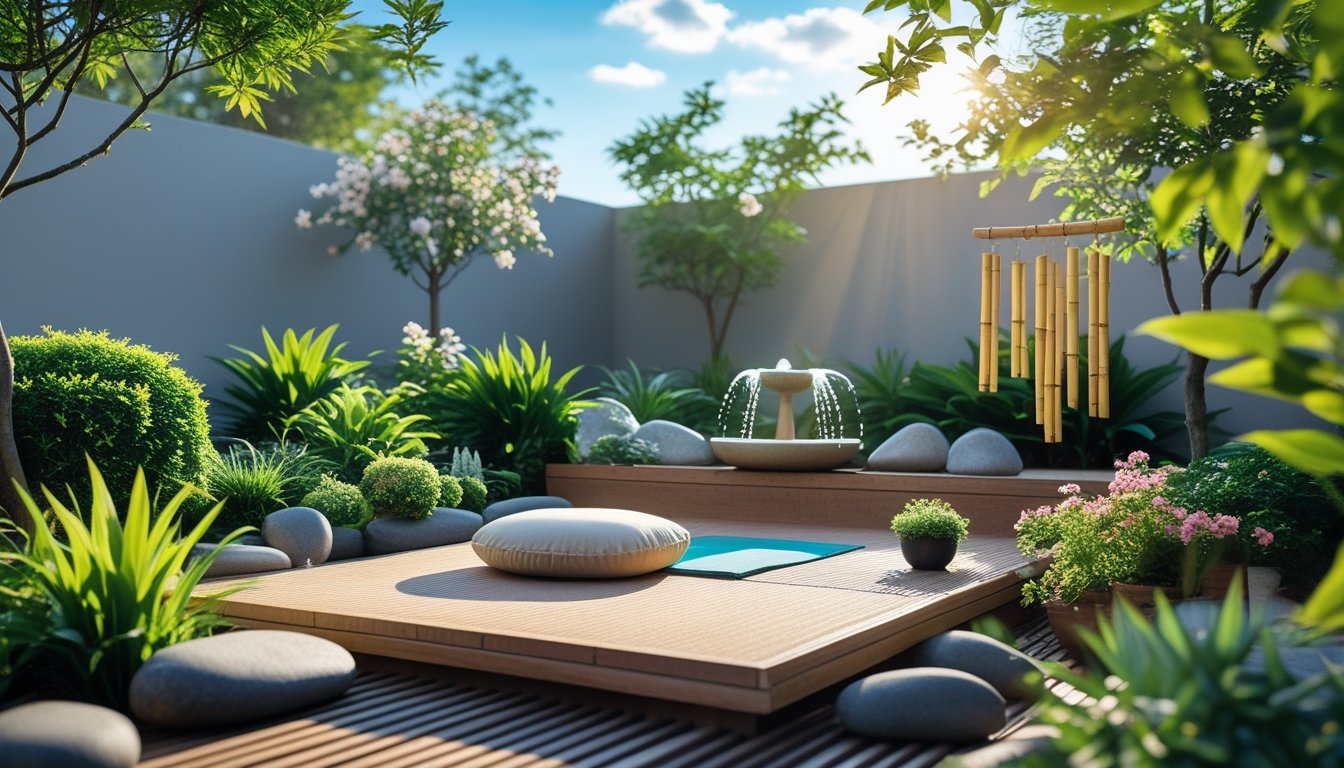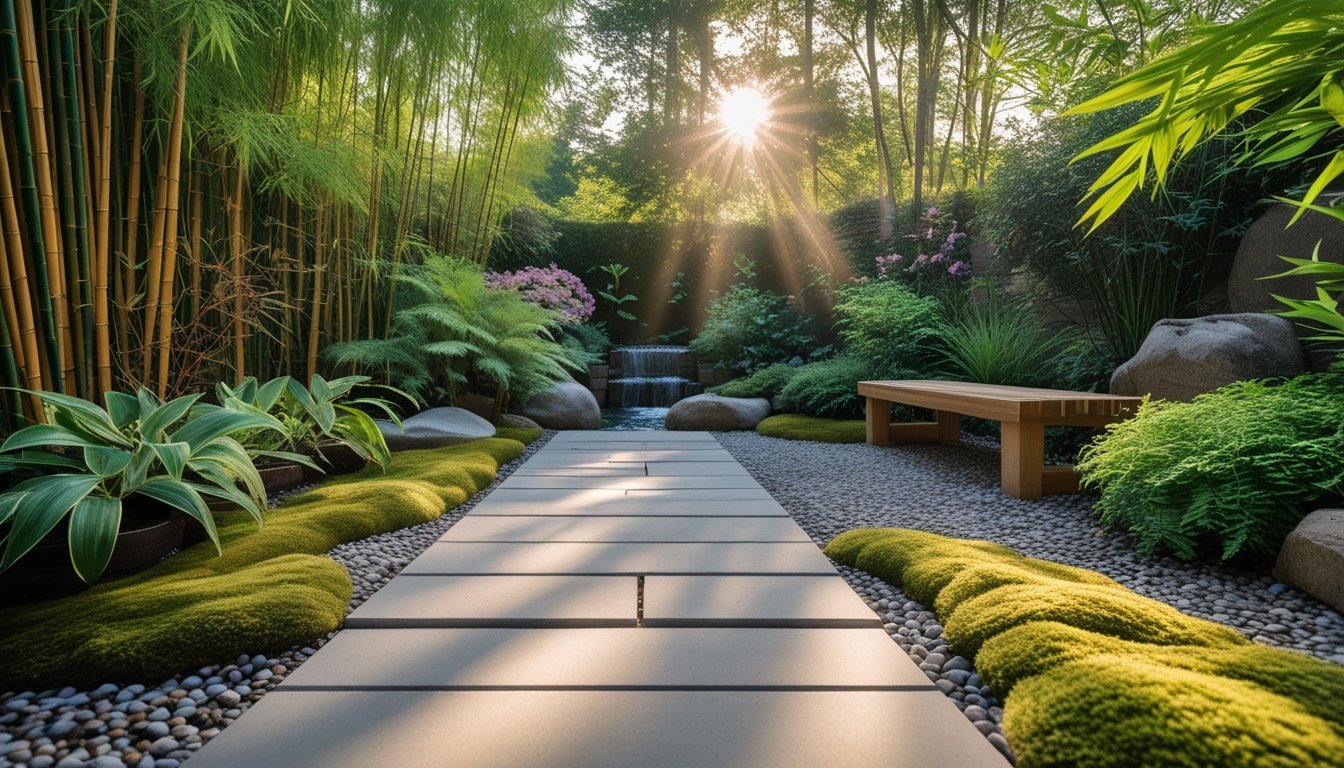Late updated: 08 Jun 2025 15:06
Written by: James Whitaker
Designing a Serene Garden Meditation Space: Creating Tranquillity and Peace
Designing a serene garden meditation space provides a refuge from the hustle and bustle of daily life. Imagine stepping into a tranquil oasis right in your own backyard, where nature's calming elements enhance your meditation experience. Creating a space for reflection and peace can transform even the smallest outdoor spot into a personal retreat.

In embarking on this journey, it is essential to consider both the layout and the elements that evoke a sense of calm. By carefully placing features such as pathways, seating, and spiritual symbols, we can craft a harmonious environment that complements our meditation practice. The choices made in arranging the garden will encourage mindfulness and introspection.
The inclusion of natural and aesthetic elements plays a pivotal role in enhancing the serenity of the space. Thoughtful additions like solar-powered lanterns or water features contribute to an atmosphere of tranquility, making the garden both functional and inviting at any hour. Through deliberate design, we can curate not just a garden, but a sanctuary that enriches our spiritual journey.
Key Takeaways
- Design a meditation garden to foster peace and reflection.
- Include natural elements for a serene atmosphere.
- Use thoughtful design to enhance mindfulness.
Principles of Designing a Serene Garden Meditation Space
Designing a meditation garden involves harmonising elements to evoke peace and tranquility. Key principles include achieving balance, incorporating natural materials, and ensuring privacy through thoughtful layout and design.
Establishing Balance and Harmony
In a serene garden meditation space, balance is crucial for creating a tranquil atmosphere. We focus on symmetry and principles of feng shui to guide the flow of chi throughout the garden. Items like stone pathways flanked by evenly spaced plants establish rhythm and order. Balance also involves a harmonious mix of textures and forms, such as rugged stones with soft foliage.
Additionally, harmony comes from a cohesive colour palette, often featuring soothing earth tones. By integrating natural and man-made elements thoughtfully, we foster an environment that nurtures inner peace and reflection.
Choosing Natural Elements
Natural elements serve as the foundation of our meditation gardens, seamlessly connecting us with nature. These gardens typically feature components such as wood, stone, and water. Greenery: Plants, especially lush, low-maintenance varieties, contribute to a calming environment. Water elements, like ponds or fountains, introduce soothing sounds that mask city noise, enhancing tranquillity.
To reinforce the connection with nature, we often use natural materials like stone and wood for seating or pathways. These elements not only provide aesthetic appeal but also symbolise earth's stability and durability, reinforcing the garden's role as a sanctuary.
Incorporating Privacy and Enclosure
Creating a sense of enclosure is essential for a personal sanctuary, ensuring the garden is a retreat from the outside world. We often incorporate hedges, fences, or screens to delineate boundaries, offering both privacy and protection. Planting dense shrubs or using bamboo creates a living wall that gently encloses the space. This builds an intimate setting.
By strategically placing these elements, we preserve openness while still offering seclusion, allowing for uninterrupted meditation. Enclosure helps minimise distractions, allowing us to fully immerse in the serene environment. The careful balance of privacy and openness ensures our meditation space remains a personal refuge for introspection and peace.
Essential Features and Details for a Meditative Garden

Creating a meditative garden involves thoughtful integration of elements that promote relaxation, reflection, and serenity. By incorporating water features, strategic seating, harmonious pathways, and a careful selection of plants, we can cultivate a peaceful retreat conducive to spiritual growth and meditation.
Inviting Water Features
Water features are essential in a meditative garden, offering both visual allure and auditory tranquillity. A small pond or fountain can bring soothing sounds that enhance relaxation and focus. Water lilies on a pond surface add beauty and a sense of calm, inviting reflection and peaceful contemplation. By choosing the right water features, we create a focal point that complements the garden's serene atmosphere.
Comfortable and Reflective Seating
Appropriate seating is crucial to ensuring relaxation and self-reflection during meditation sessions. Comfortable seating options such as benches or meditation cushions allow us to spend extended periods outdoors. A well-placed seating area, whether nestled under trees or alongside a pond, provides a haven for introspection and spiritual renewal. The goal is to create a dedicated space for contemplative moments.
Pathways and Flow
Pathways are fundamental in guiding our journey through a meditation garden. Elements such as stone pathways, winding paths, or stepping stones invite movement and exploration. A varied path design not only ensures functional navigation but also enhances the garden's aesthetic appeal. Walking meditation opportunities along these paths encourage mindfulness and deepen our connection with the natural surroundings.
Mindfully Selected Plants and Greenery
Careful plant selection is pivotal in cultivating an environment conducive to meditation. Lush greenery combined with aromatic and fragrant plants, such as jasmine and lavender, add sensory depth. Incorporating vibrant flowers alongside calming ferns or a bonsai tree can enrich the visual experience. Such diversity invites mental clarity while supporting an atmosphere of relaxation and stress relief.
Sensory Enhancements and Personal Touches
Incorporating sensory elements adds unique personal touches to the meditation space. The use of soothing sounds from water features or wind chimes enhances the auditory experience. Statues or sculptures might serve as inspirational focal points. Thoughtful lighting and aromatherapy can further transform the garden into a calming sanctuary, offering an immersive sensory experience.
Sustaining Your Meditation Garden
Maintaining a meditation garden demands regular care to sustain its beauty and purpose. This involves watering, ensuring proper soil conditions, and adjusting for sun exposure. Routine upkeep is vital to preserving the garden's calming atmosphere, supporting our overall wellbeing and mental clarity. By committing to regular maintenance, we uphold the garden's role as a peaceful retreat and sanctuary for reflection.
Frequently Asked Questions

Designing a serene garden meditation space involves integrating elements that foster reflection, tranquillity, and promote mindfulness. Let's explore some common inquiries that guide the creation of these peaceful retreats.
What are essential features to include in a Zen garden for personal reflection?
Essential features of a Zen garden include carefully raked gravel or sand to represent water, rocks as focal points, and minimalist planting. Trees like Japanese maple can offer shade and calmness. The simplicity of design encourages introspection and a deeper connection to oneself.
What steps should beginners take to create a tranquil garden meditation area?
For beginners, starting with a simple design is key. Assessing the space, considering the light and soil condition, and choosing easy-to-maintain plants can provide a strong foundation. It's important to incorporate personal touches that resonate with one’s spiritual or meditative practices.
How can one incorporate mindfulness principles into garden design?
Mindfulness principles can be integrated through intentional layout and mindful plant selection. Emphasising sensory experiences like textures and scents promotes presence. Consider paths for leisurely walks and areas for quiet contemplation. Mindful gardening can become a daily practice to nurture both the self and the environment.
In what ways can you design a garden that nurtures spiritual well-being?
Creating a garden that nurtures spiritual well-being involves adding elements like meditation benches, quiet nooks, and water features to enhance serenity. Privacy is crucial, so incorporating hedges or fencing ensures a safe haven. The garden should invite reflection and provide a sanctuary away from everyday stressors.
What plants and elements embody serenity for meditation garden spaces?
Plants such as lavender, bamboo, and ferns embody serenity and promote calmness. Elements like water features, such as a small fountain or pond, can add a soothing auditory experience. It's important to choose plants and elements that align with the intended atmosphere of peace and reflection.
How can the design of a meditation garden influence relaxation and stress reduction?
The design of a meditation garden influences relaxation by fostering a harmonious environment. Elements such as flowing water, gentle pathways, and subtle lighting create a calming atmosphere. By focusing on simplicity and balance, the garden becomes a retreat for unwinding, allowing a deeper connection with nature and self.
